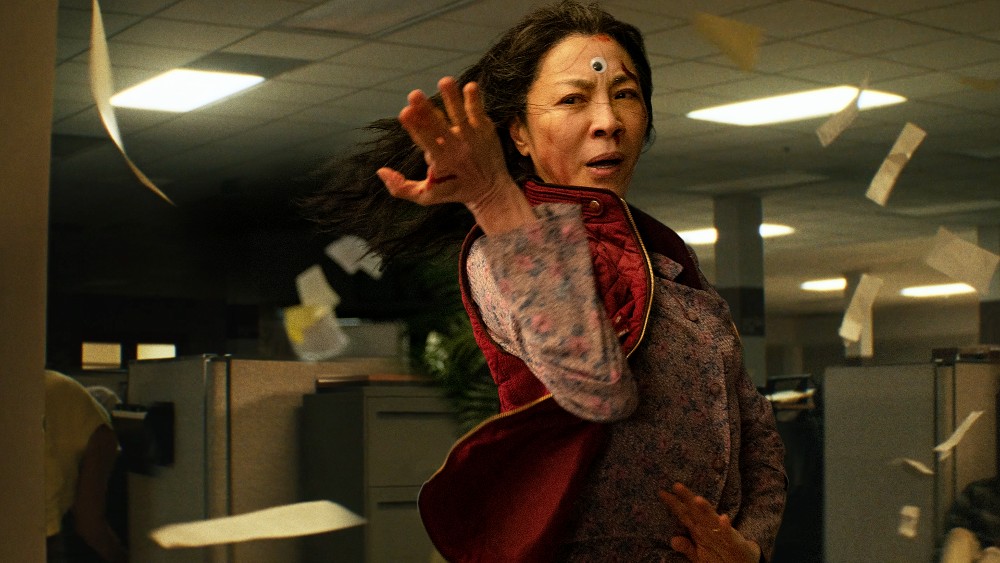
A24’s indie breakout Everything Everywhere All at Once tackles the multiverse on its own terms and in this timeline, it has become a bonafide box office hit, as it’s on the verge of becoming the studio’s highest-grossing domestic release. Directed by the Daniels (Dan Kwan and Daniel Scheinert), the movie stars Michelle Yeoh in a powerhouse performance alongside Ke Huy Quan, Stephanie Hsu, James Hong, and the great Jamie Lee Curtis.
Sound plays an integral part in the film’s success — not just the Son Lux soundtrack, but the detailed work from a veteran sound team including Sound Designer Andrew Twite and Sound Supervisor Brent Kiser (the founder of Unbridled Sound), both of whom worked on the Daniels’ first feature Swiss Army Man and Alma Ha’rel’s Honey Boy; Sound Designer Julie Diaz, who served as ADR supervisor on EEAAO; and Sound Effects Editor and Re-Recording Mixer Alexandra Fehrman, who earned an Emmy nomination for her work on The Boys and served as the final re-recording mixer on Sian Heder’s Best Picture winner CODA.
The sound team spoke with Below the Line on a group Zoom call, where their importance to the picture rang loud and clear.
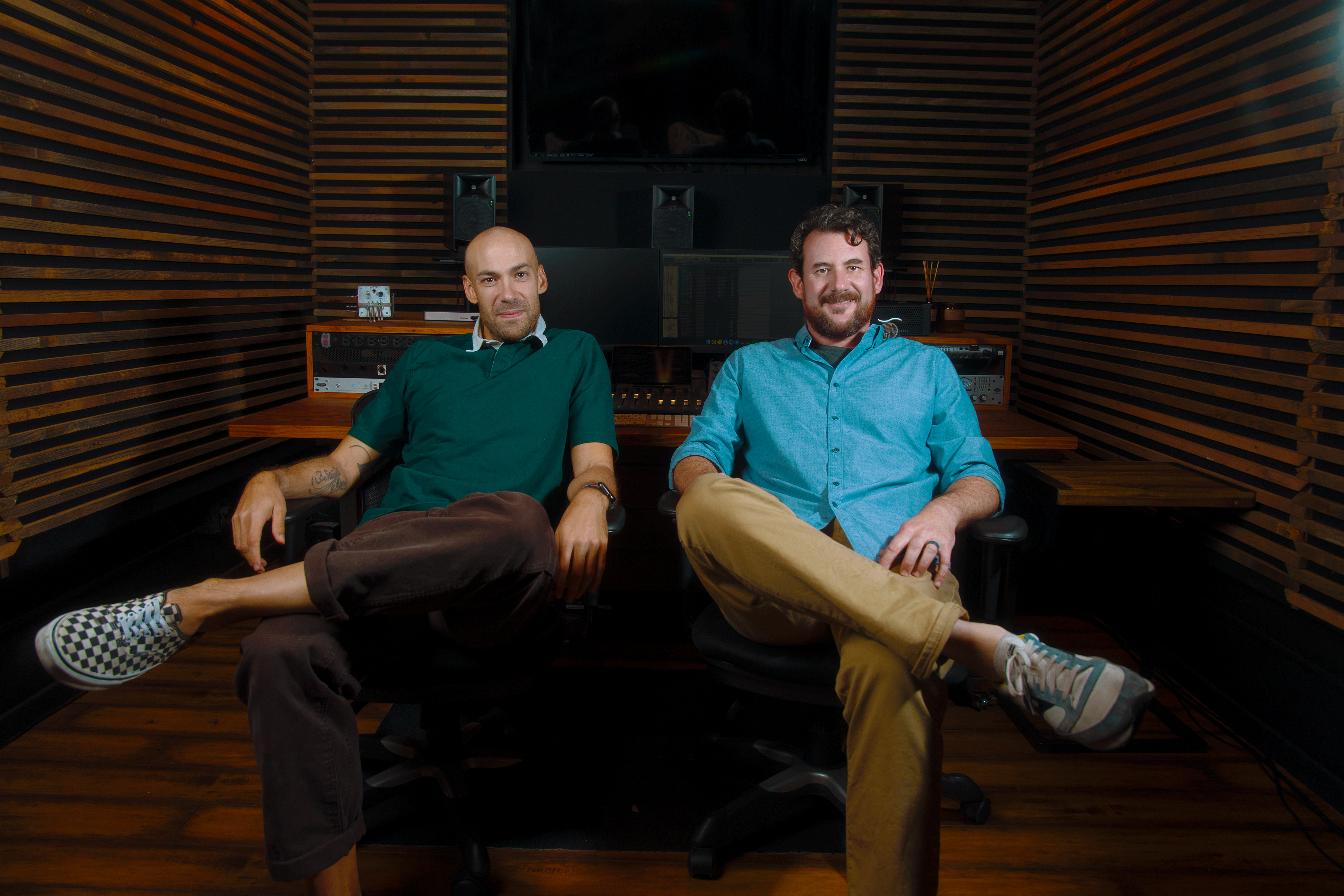
Below the Line: Do all of you have a history with the Daniels?
Brent Kiser: We’re really fortunate to be close with the Daniels. We’ve kind of been around since Swiss Army Man. That’s when the Everywhere script was developed.
Below the Line: What’s their process like?
Kiser: They provide a great environment for creative collaboration with department heads.
Andrew Twite: They’re very organized, I mean their intentions are always very clear. They like to be able to directly communicate their ideas so they can confirm an understanding.
Alexandra Fehrman: Collaboration is really important to them, that’s why they take so much time to get to know everyone on the team.
Kiser: We all live in the same neighborhood. One post house is about two blocks away, and the Daniels [are] two blocks past that. Tallie Medel, the actor who played Becky said, ‘It’s just like making movies in your backyard with your friends.’
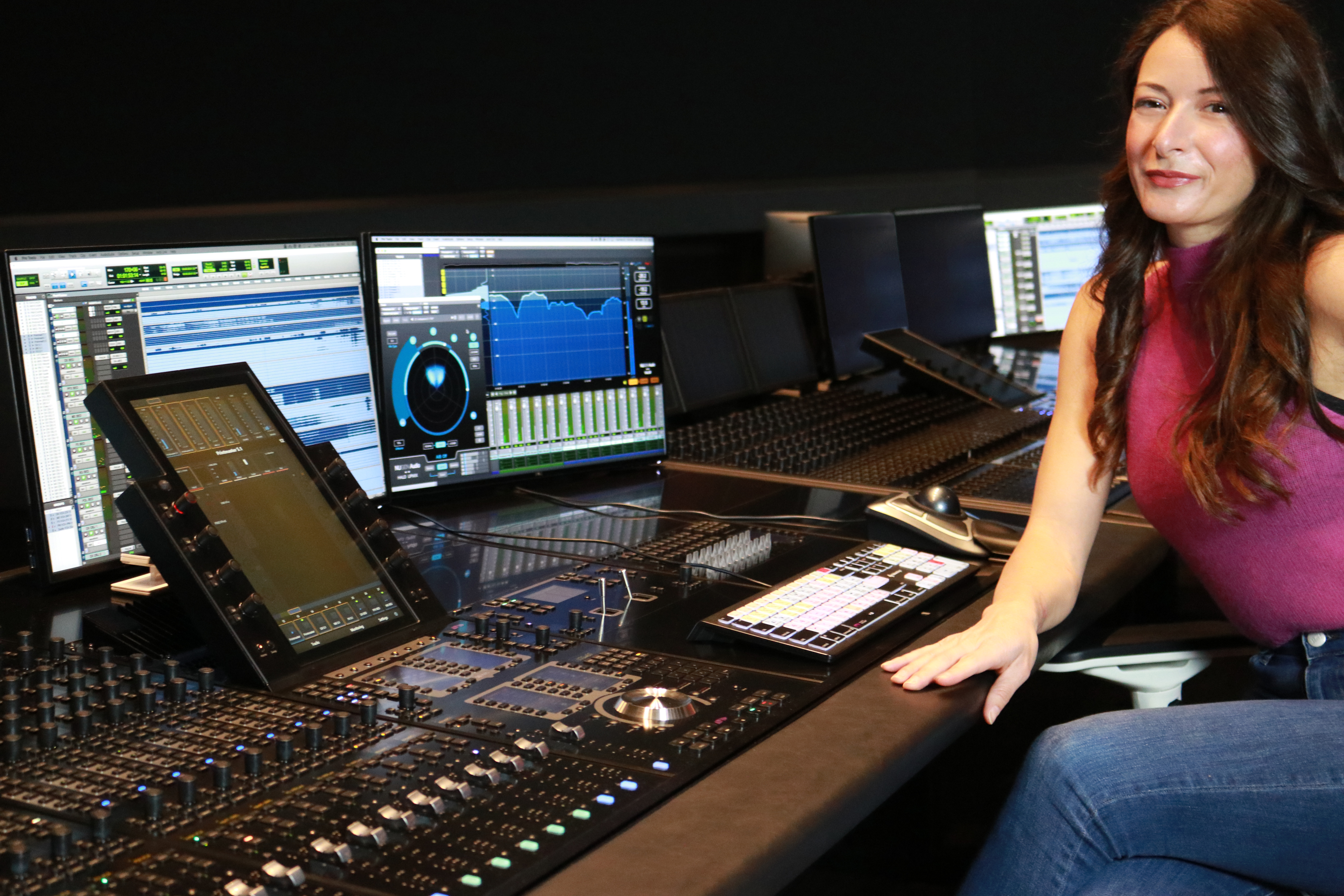
Below the Line: How did Covid affect the production?
Twite: They had one day of primary shooting left when everything locked down here in LA. They shot this whole thing in less than 40 days, and they got 34 or 35 days before the shutdown. I think they had one green screen day left.
Kiser: The initial picture edit was supposed to be four months. That turned into a year. So we all had a lot of time for development and refinement, which was great on a movie like this where one tiny misstep will throw you way off.
Twite: We developed a good portion of the sound design under Covid protocols. We would do spotting sessions over Zoom, we used Frame.io to share updates and get notes on scenes.
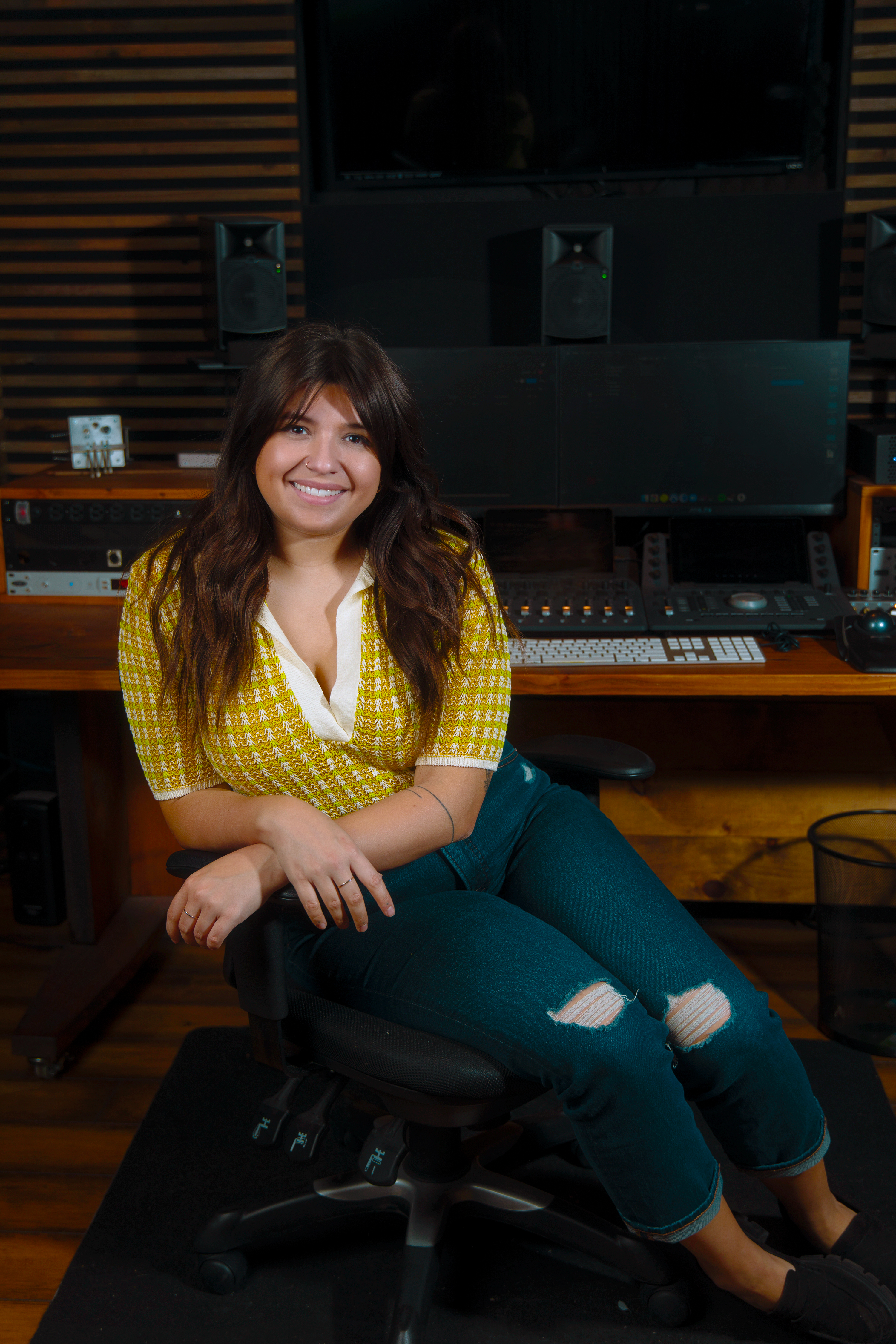
Below the Line: How many different universes did you have to deal with?
Kiser: I would suggest that you not think in terms of universes, but in track counts. We had 300 or more sound effects tracks. Andrew and I have worked together for years, so we had that stack to hand off to Alex, who was new to the team.
Fehrman: We had to sculpt the sound using all those designed tracks.
Twite: It wasn’t always 100 percent necessary to establish an entire universe. What’s happening in the movie is, you’re kind of tapping into those universes to bring a certain element into the one you’re in. If there was a point where we needed to lean on another universe, it was more about building up those ambiances and feeling that space, even for a very short period of time. A great example of that is the culmination with Joy Wang (Hsu) and Evelyn (Yeoh) in front of the bagel at the top of the stairwell. When they’re spinning through those worlds, all of those ambiances were built out very, very fully, with specific elements that we could use to kind of poke through and show you that they are traveling through this mess of worlds.
That approach applied to our ambiances and backgrounds throughout the film. When it came to specifics, we were trying to lean on elements that could pull us into the next scene or concept, and tie the two together. The broken glass sound, which indicates that Evelyn’s mind is leaking from one universe to another. Or the radio for Joy Wang, because she had that ability to tune her way through the universes.
That’s where Atmos really helped. Like, we could use Deirdre’s voice early on, when they’re in the janitor’s closet. We would use a little bit of that radio grumble and then Deirdre’s voice to pull us back and forth. That was Brett and Alex’s and the Daniels’ secret sauce for how to navigate through the movie.
Fehrman: We didn’t want anything to distract from what we were experiencing in our current universe. So we used Atmos like the ripple effect of the lights. When we were in the hallway and something was pulling us out to another universe, we would introduce it in Atmos first so that it seemed like it was coming from an indescribable place.
Anything that was coming around us, when Evelyn was being pulled into a universe, we would use the sound space to sort to shift everything from the back to the front, if that’s the direction she was flying. During the fight sequence, we would use just one or two elements to bring us from what we were seeing in the room to shift into the sign twirling universe or wherever else.

Below the Line: Did you prepare mixes for non-Atmos theaters?
Kiser: No, we shot the center on this one. We were only able to do the big, theatrical Atmos mix. We did re-renders based off that, we could down-mix to 7.1 and 5.1 stereo.
Fehrman: They were created, but not heard. We didn’t get to do a separate mix.
Kiser: Because of the indie nature of this film, we didn’t have the budget to go back and do like a streaming mix or things like that. But we had that in mind. We predubbed in a smaller 5.1 studio before we got to the Atmos stage to make sure everything would translate well.
Twite: Something we talked about with using the Atmos space is that we didn’t want to put anything out around us that wasn’t relating to the multiverse.
Below the Line: Usually, the soundtrack is one of the last elements finished on a film. Was that the case with Son Lux?
Kiser: Before shooting, Dan Kwan was writing to a lot of the Son Lux score. That’s the way he works, he writes to music. Son Lux got on board very early. Those guys were amazing, they gave all of their catalog and instrumentals to Paul Rogers, so he was editing to their music. Of course, they would work on pieces and come up with new music. I think there are 49 tracks on the soundtrack, including the amazing Randy Newman.
Twite: There are 110 minutes of music in a 140-minute movie. Being able to use Son Lux’s music and instrumentals in the temp helped get the vibe and feeling of each scene. So even if we didn’t have final music, we had the right beats in the right places. They were wonderful to work with. They were constantly adjusting cues when it was needed.
Fehrman: It was apparent that the sound design and the music were really getting along. When we brought it onto the stage, it was really just about massaging and picking moments. You could play everything together and just decide what the relationship between the two would be.
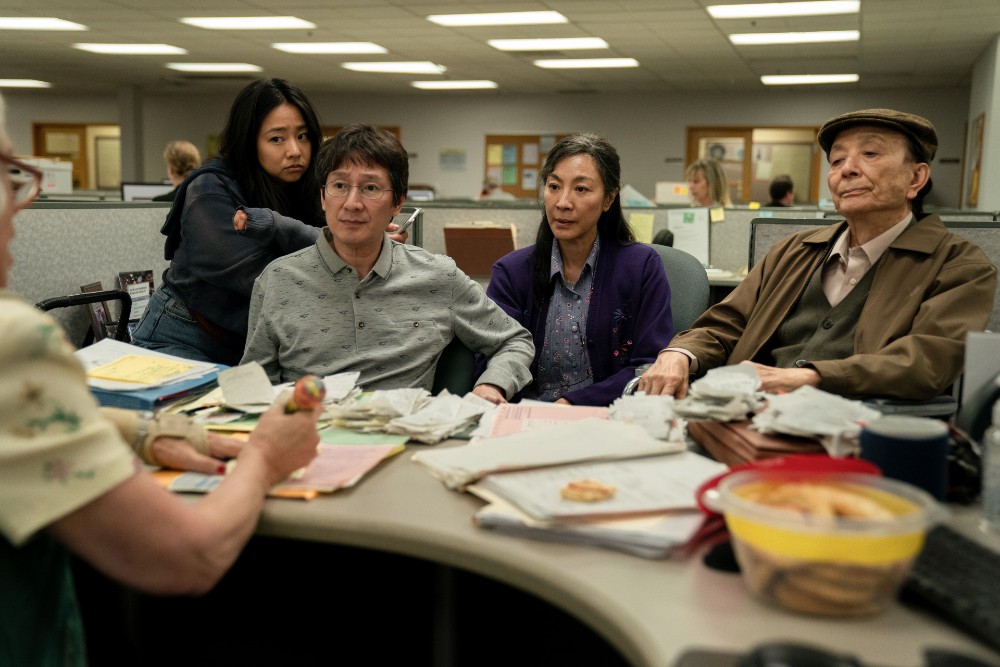
Below the Line: Did you need a lot of post-dubbing?
Julie Diaz: To be completely honest, there wasn’t a lot of dubbing on this. Which you might think, given that Michelle and James Hong come from a background of heavy dubbing.
We did go back in because the Daniels wrote a lot of lines, and there were a couple things on set that they wanted to recapture. And all of the music. We brought in Randy Newman and Harry Shum, Jr. for the Raccacoonie parts, and Jane Lui, the opera singer. And the Martial Club (Brian and Andy Le). I never had anyone come in and do flips and kicks and not hit the mic stand in the recording booth before. They’re two brothers, and they’re amazing at what they do. They gave us so much stuff that we were able to sprinkle everywhere else throughout the film.
Kiser: The Martial Club guys gave us notes on the fights and helped with the rhythm. We actually used their vocalizations, which is pretty rare. Usually, we get a bunch of loop groupers in, but these guys came in and recreated their own grunts and things like that.
Below the Line: How about those fights? Michelle Yeoh, one of the world’s great martial artists, comes from a Hong Kong tradition in which rhythm is key and almost as important as the stunts themselves.
Twite: A lot of work went into those fight scenes. Brent and I laid out a spreadsheet before we started cutting anything. We prioritized the bigger scenes, including the fights. That’s where we need to really show up, bring character to these huge moments, make them unique. We’ve all seen a million Marvel movie fight scenes. We wanted to bring our own flavor, which meant maybe don’t lean so heavily on big punchy impacts.
The music was a huge guide for us, as well as the way it was shot and how Paul Rogers edited it. We recorded as much original content as we could, but we found that not having to lean on impacts was a good approach. We could use the ‘whooshes,’ anything to help keep the rhythm moving. The music Son Lux put in there is very percussive. So yes, we built everything out as accurately as possible. Then I was able to sit back and listen to the fights against the music, adjust the hits, adjust the impacts, and adjust transition moments to flow with the music.
Deferring to music and the rhythm of the picture edit was crucial. The moment one of those hits doesn’t match one of those music beats, you are instantly pulled out of it. The first thing you do is lose the sound effects that are jarring you, that aren’t working with the flow.
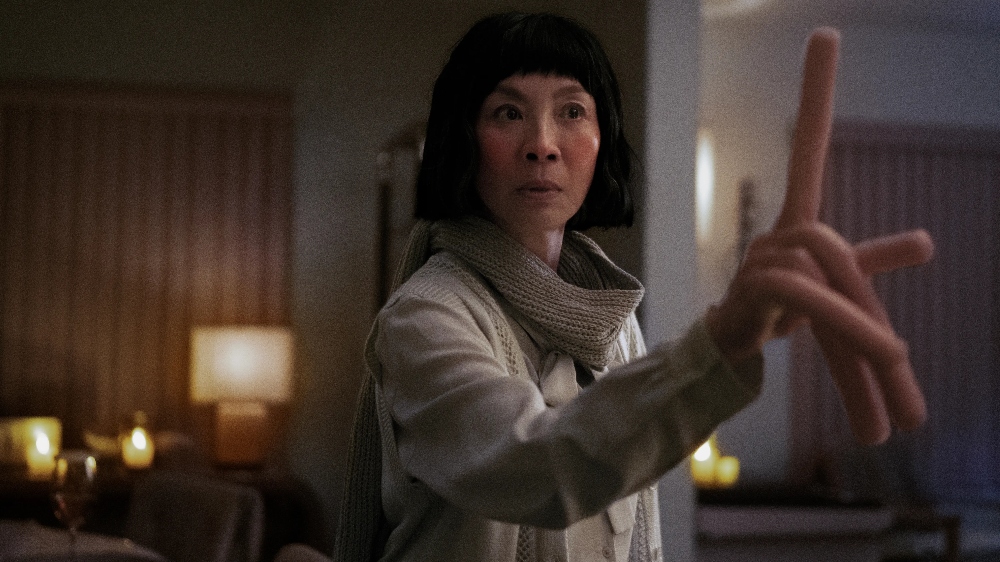
Below the Line: One of the reasons for this film’s success is its depth. There’s so much going on underneath the surface, and the sound is a huge part of that. What do you think was the most difficult universe to achieve?
Twite: The bagel was way difficult. The hot dog world is such an endearing element, but the bagel world, in particular, is such a strange concept to wrap your head around.
It was one of the early scenes they sent over. It wasn’t even built out, it was just a white room and a black circle. A placeholder, solid black. And they’re like, just try some stuff. I started simple. All right, let’s toast a bagel and run a knife on it and crush toast and stuff.
Then you remember that it’s supposed to have everything in the universe. You slowly build that out: a baby crying, animals, hawks screeching. We went further and tried to establish the rhythm of its movement. At one point, in early cuts, we had a kind of battle cry. Then slowly, more and more, we pulled it back. It was a heady concept, but when we see it in action, there’s so much else going on, that we had to pick and choose our moments so the dialogue could ring true. Dialogue’s king. If you can’t hear or understand what’s going on in the story, all the rest of that stuff really doesn’t matter.
Everything Everywhere All at Once is still playing in select theaters nationwide.





